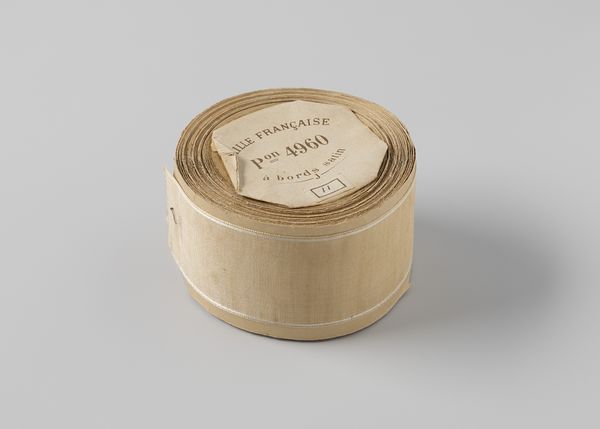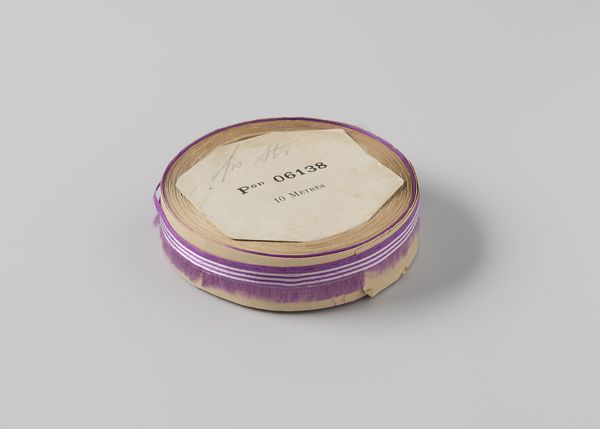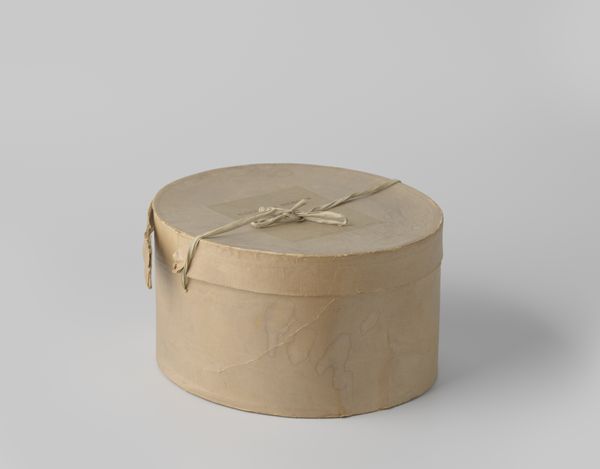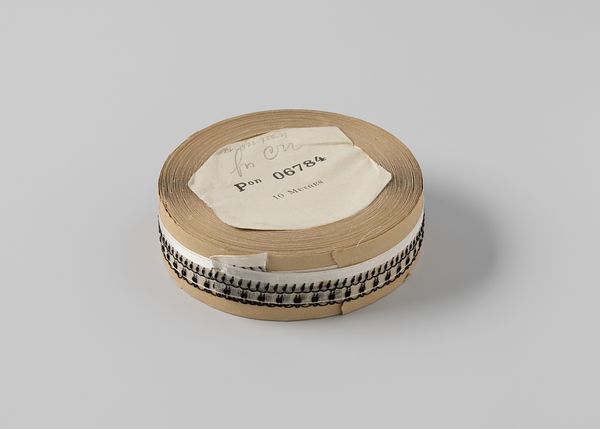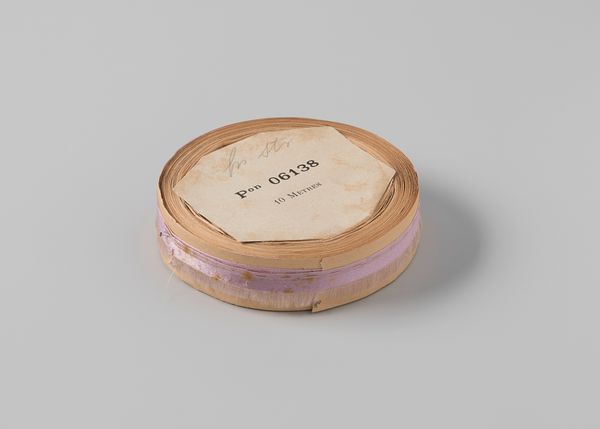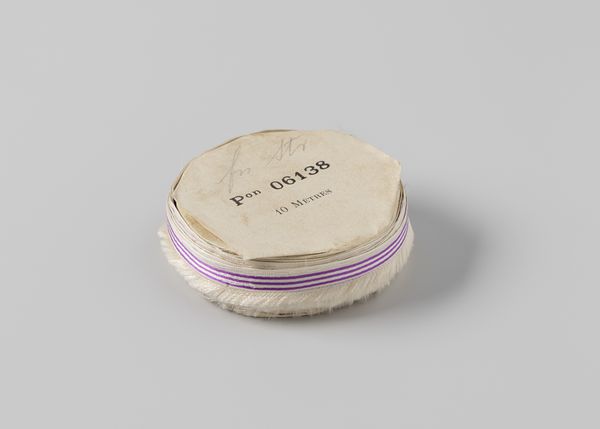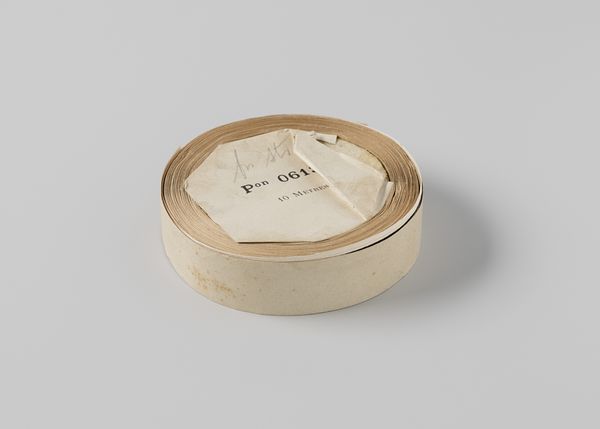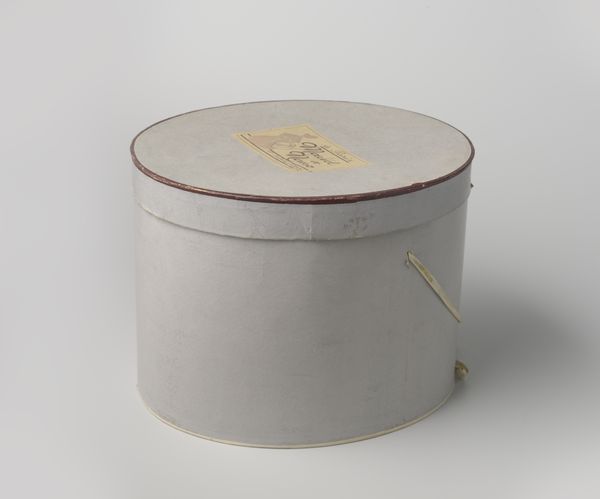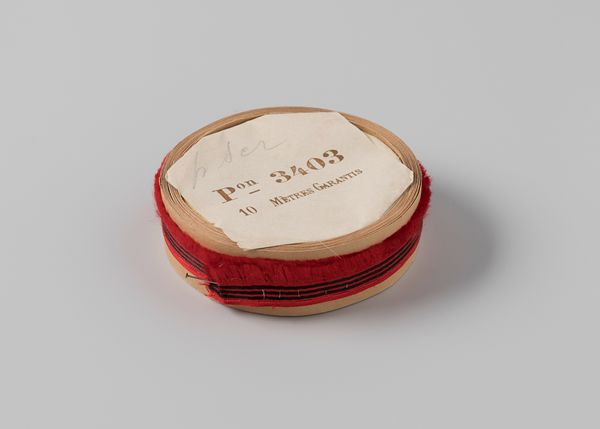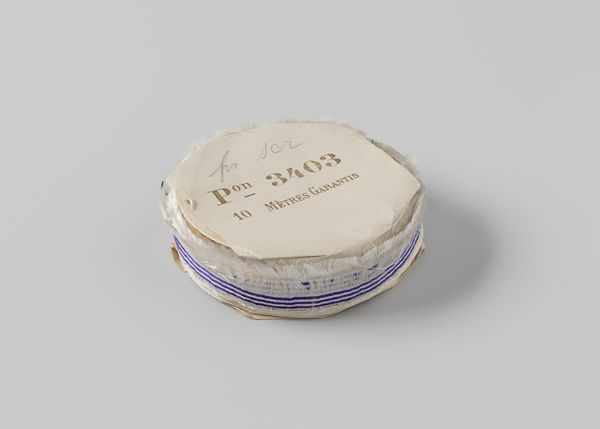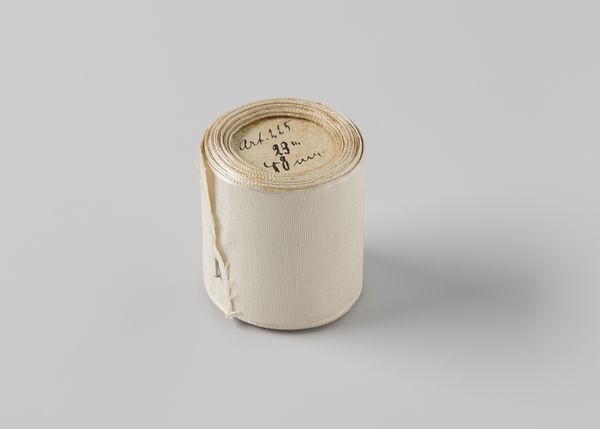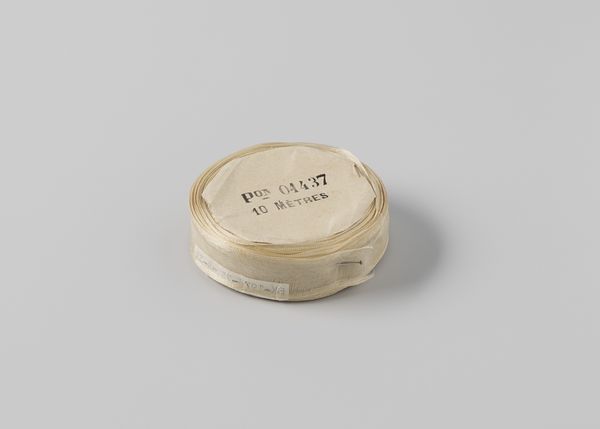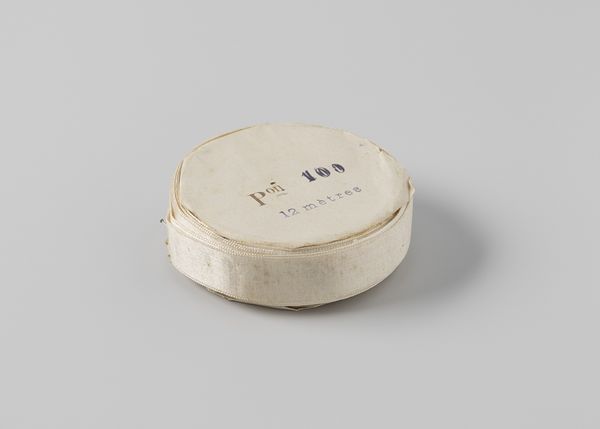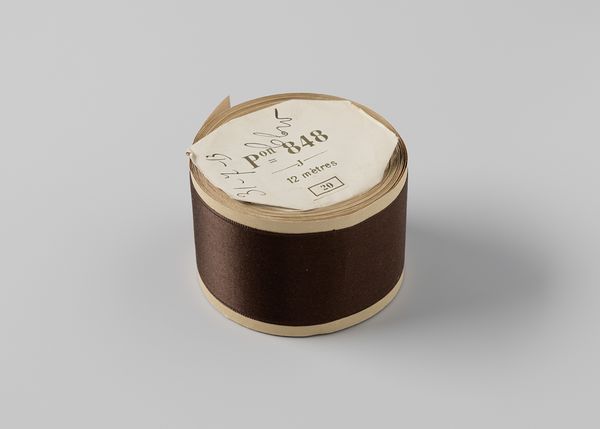
Ronde kartonnen hoedendoos met losse deksel, bekleed met beige papier, voorzien van katoenen striklinten c. 1939 - 1964
0:00
0:00
paper, photography
#
studio photography
#
product studio photography
#
product shot
#
still-life-photography
#
computer generated paper art
#
shading render
#
paper
#
photography
#
product design photgrpaphy
#
metallic object render
#
product mock up
#
product photography
#
product render
Dimensions: height 18 cm, diameter 29.5 cm
Copyright: Rijks Museum: Open Domain
Editor: So, we’re looking at a photograph of a hat box, believed to be from somewhere between 1939 and 1964. It's a studio shot, fairly straightforward. I find the beige color scheme and the simple design quite elegant, actually. How do you interpret a seemingly mundane object like this within its historical context? Curator: Well, this isn't just a hat box, it’s a fragment of social history. The presence of "Albouy Paris" signals the aspirations of a particular clientele. This image, staged as it is, speaks volumes about the evolving role of luxury and branding in mid-20th century consumer culture. Where do you think a hat from Albouy Paris placed someone socially at that time? Editor: I imagine owning something from a Parisian boutique suggested a certain level of affluence and connection to current fashion trends, right? Maybe access to international travel? Curator: Precisely. The hat box, then, acts as a signifier of these social codes. It's interesting to consider how the very act of photographing and preserving it elevates it beyond a functional object into a representation of that status. In the post-war years, fashion houses exerted greater control, not only in clothing creation but also their advertisement through studio photography. Don’t you find it telling? Editor: Yes, I do! I hadn’t thought about how this image plays into the larger framework of branding and the democratization of luxury, at least in aspiration. Thank you, it gave me new perspective! Curator: Indeed. Examining an image such as this shows us how art exists, and persists, in all corners of our world.
Comments
No comments
Be the first to comment and join the conversation on the ultimate creative platform.
